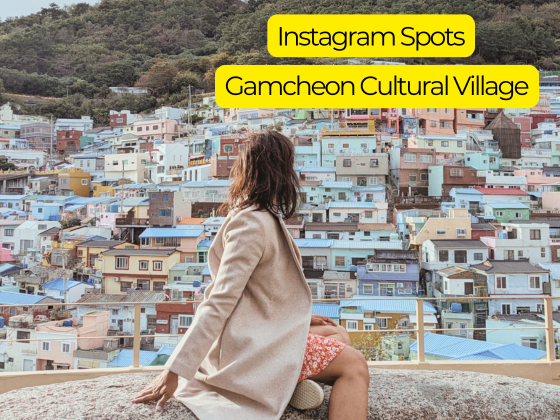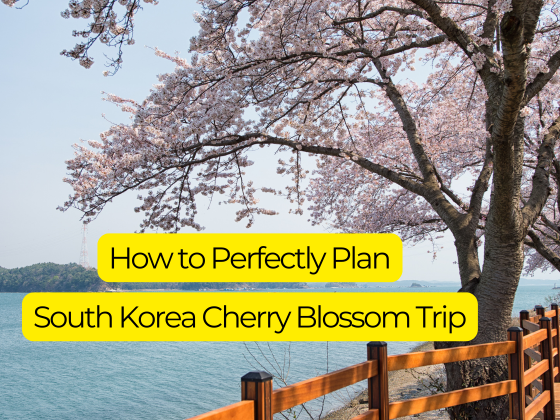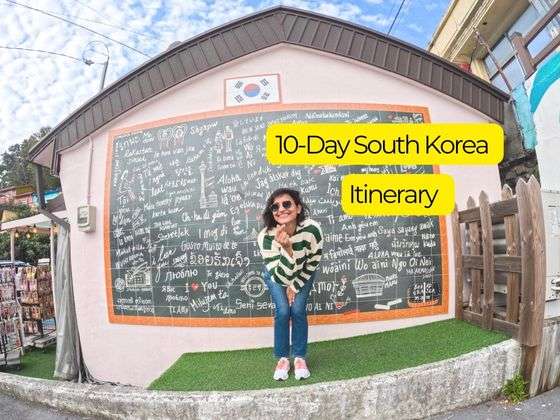
Best Hikes in South Korea
Estimated reading time: 16 minutes
When planning my trip to South Korea I was focused on the food and culture. Little did I know my holiday would turn into an epic hiking adventure in South Korea! While researching I found out how South Koreans love to go on a hike, and you know when in Rome? But, South Korea has hundreds of hiking trails, what are the best hikes in South Korea?
I’ve got a round-up of the best hikes in South Korea for you. Right from the most strenuous to the ones that feel like a stroll in the park. I managed to go on a couple of these hikes during my South Korea holiday. And I’m sure I’ll go back to try the others out.
So go on and add some of these to your South Korea itinerary!
Best Hikes in Seoraksan National Park
Tucked away in the northeastern corner of South Korea lies a hiker’s paradise – Seoraksan National Park. If you are on a short holiday in Seoul, Seoraksan is the best hike in South Korea for you. Seoraksan National Park is 400 square kilometres of pure, unadulterated natural beauty. It is the third-highest mountain in South Korea and offers several peaks, valleys, rivers, waterfalls, rock formations, temples, and statues.
Hiking at Seorsaksan is particularly stunning during fall and winter. Which puts it to the best winter and autumn hikes in South Korea.
From easy strolls to challenging treks, short bursts to all-day adventures, and straightforward paths to brain-teasing mazes – take your pick!
Ulsanbawi Rock
Get ready for a hike that’s not for the faint of heart but promises rewards beyond your wildest expectations. Ulsanbawi Rock, a towering granite masterpiece is the best Autumn hikes in South Korea.
The journey kicks off at Sinheungsa Temple, a time-travelling experience to the 7th century. The trail then follows a paved road and a wooden bridge across a stream before ascending steeply through a forest. It becomes more difficult as it passes through several metal staircases that lead to the summit of Ulsanbawi Rock.
Ulsanbawi Rock hike takes about 3 to 4 hours round trip and covers a distance of about 4 kilometres with an elevation gain of roughly 800 metres. The view from the top will steal your breath away! You can see the whole park, the East Sea, and the nearby islands from the summit. And to top it all up, feast your eyes on the Gwongeumseong Fortress, a stone castle perched dramatically on a cliff, a relic from the Joseon Dynasty.
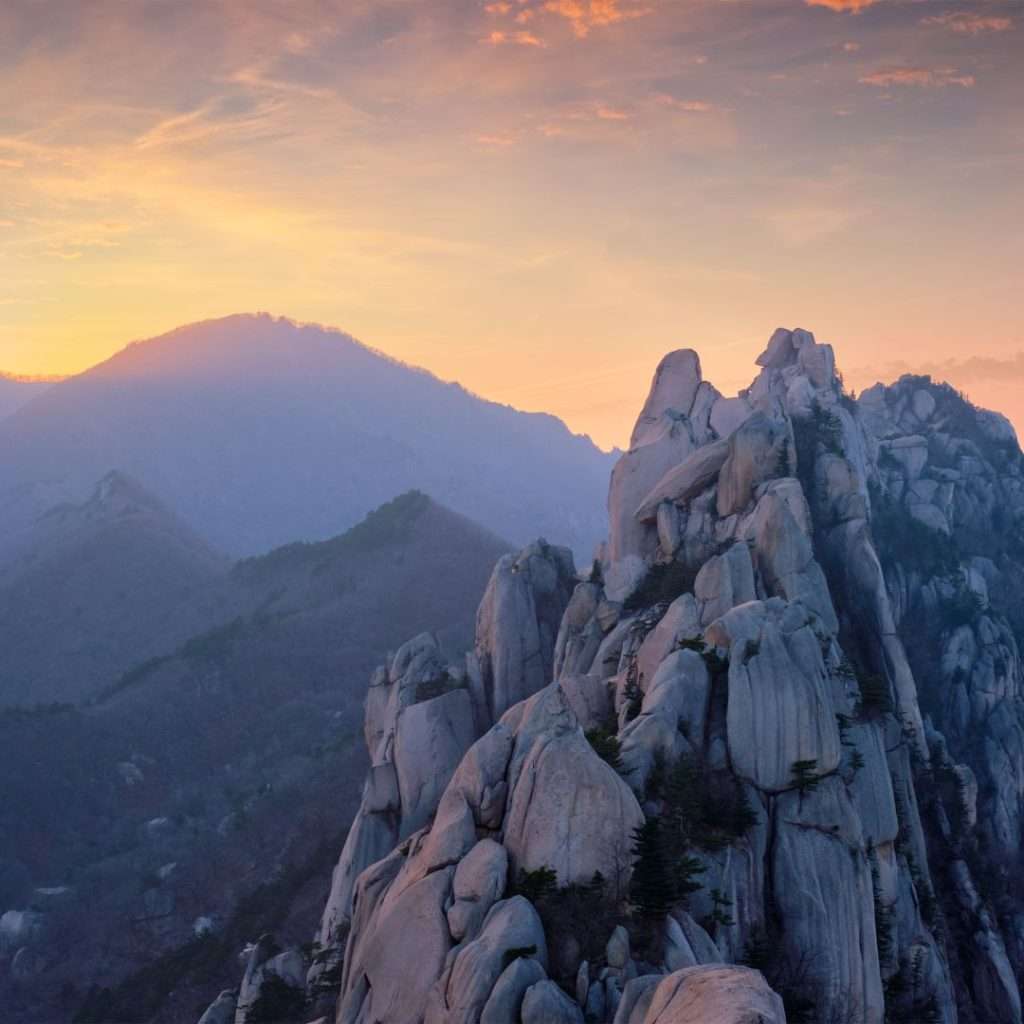
Biseondae and Geumganggul Cave
A moderate hike through lush landscapes, alongside a stream, leading you to rock formations and a Buddhist cave temple. Welcome to the Biseondae and Geumganggul Cave experience! One of the best winter hikes in South Korea.
The hike starts from Sogongwon Park, a recreational area with a cable car, a pond, and a garden. It then follows the Baekdamcheon Stream, a clear and refreshing stream that flows through the park. Mostly flat and easy paths adorned with wooden bridges and stepping stones, making the hike a delightful stroll. On the way catch a glimpse of Towangseong Falls, a majestic 320-meter-high waterfall.
The hike takes about 2 to 3 hours round trip and covers a distance of about 6 kilometres with an elevation gain of 300 meters. The highlight of the hike is the Biseondae Rock, a rock formation that resembles a flying fairy, and the Geumganggul Cave, a cave temple that houses a statue of the Buddha and offers a view of the stream and the valley.
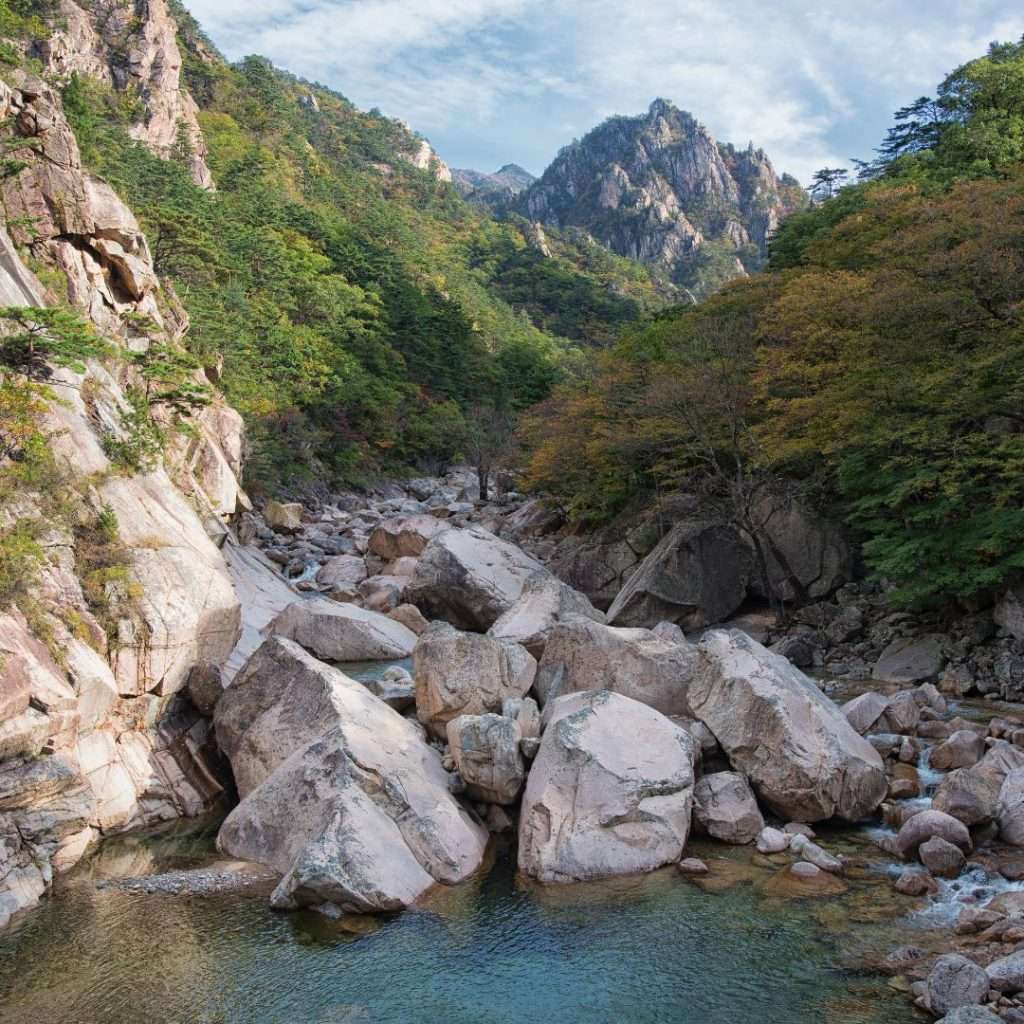
Daecheongbong Peak
Daecheongbong Peak is the crown jewel of the Seoraksan park and one of the best hikes in South Korea. It is long, it is strenuous and it takes you to the highest point of Seoraksan Park. One of the most challenging hikes in Korea, it is stunning as an autumn hike in South Korea.
Your journey commences at the Osaek Mineral Spring, a natural oasis rumoured to possess healing properties. The trail then climbs steeply through a dense forest of pine, oak, and maple trees. It passes by several shelters, rest areas, and viewpoints along the way.
This isn’t your casual stroll in the woods! It’s a test of endurance, but the rewards are nothing short of extraordinary. The hike takes about 8 to 10 hours round trip and covers a distance of about 16 kilometres and an elevation gain is about 1,300 meters!
The view from the Daecheongbong Peak is not just spectacular; it’s downright awe-inspiring. Behold the entirety of the park laid out like a masterpiece, with the East Sea and neighbouring provinces completing the panoramic canvas. If you want this to be even more rewarding, try to catch a sunset from the peak.
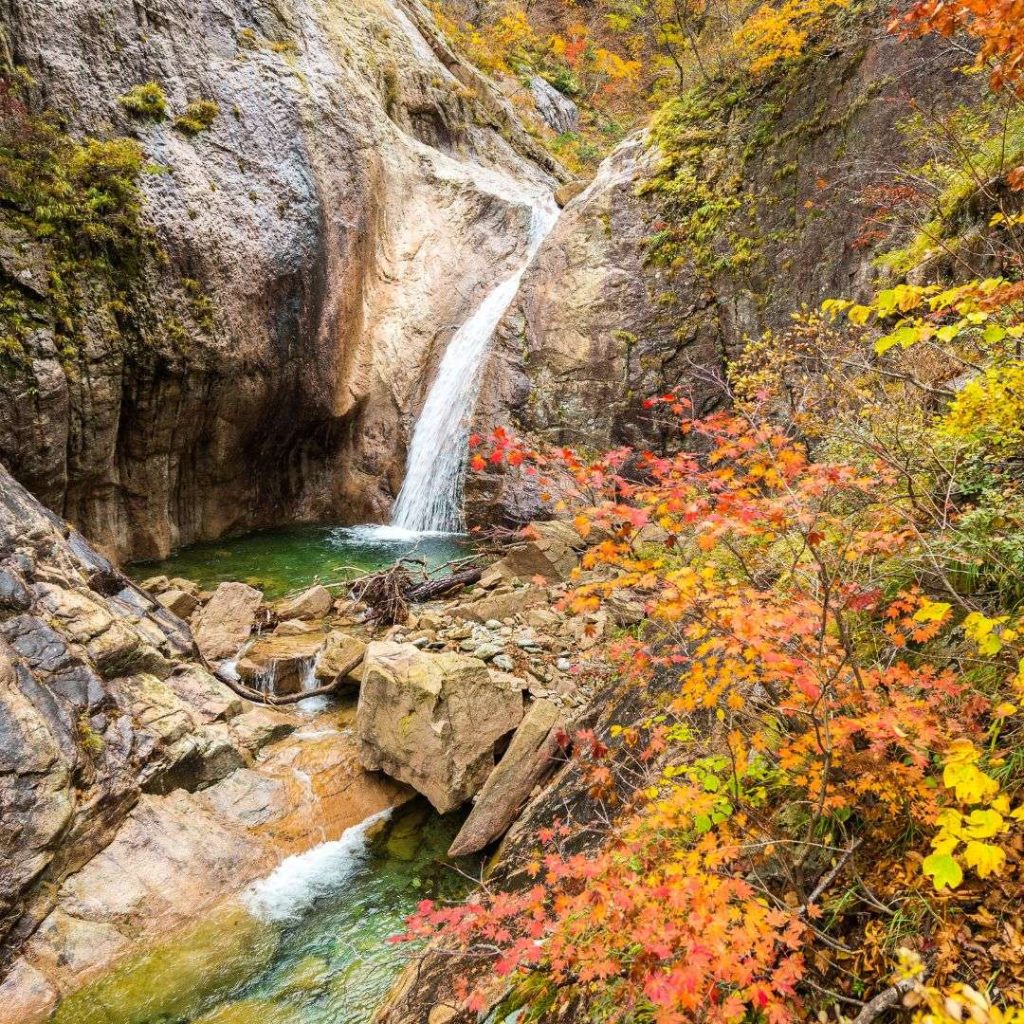
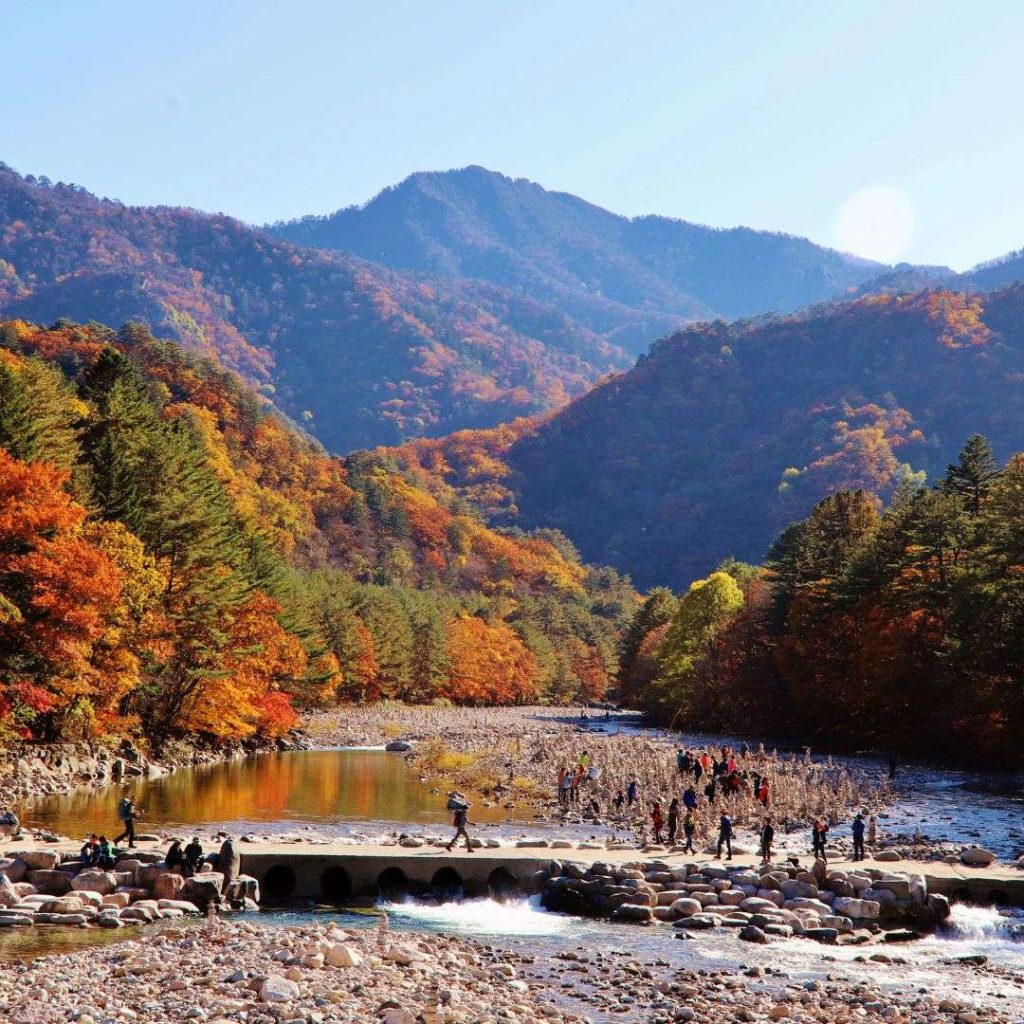
Best Hikes on Jeju Island
When someone asks me where to visit for a short holiday in South Korea, I’d undoubtedly say Jeju Island. Honestly, it has it all! Jeju Island is the perfect glimpse of South Korea if you can’t visit the mainland. Right from food, shopping and the best hikes in South Korea! So if you are planning a trip, do add Jeju Island to your itinerary
Jeju Island, a hiking haven in South Korea, offers a mix of volcanic wonders, coastal beauty, and cultural gems. Let’s find what are the the best hiking trails on Jeju Island.
Hallasan Summit
Perhaps the most challenging hike I did in South Korea. Hallasan is an active volcano that dominates the centre of Jeju Island. The great thing is, just like Seoraksan Park, Mt. Hallasan has different trails with varying difficulty levels. You’ve got to choose your trail wisely. I’ve got a detailed blog on all about climbing Mt. Hallasan, read that to find the best trail for you.
I recommend ascending with Seongpanak Trail, which starts at the Seongpanak Visitor Center. And descending with the Gwaneumsa Trail. These are the only two trails that take you to the summit.
The hike takes about 8 to 10 hours round trip and covers a distance of about 18 kilometres and an elevation gain of 1,800 meters. The highlight of the hike is the view from the top of Hallasan, which is amazing and impressive. But, the payoff is brilliant! The summit unveils a breathtaking view of the Baengnokdam Crater Lake.
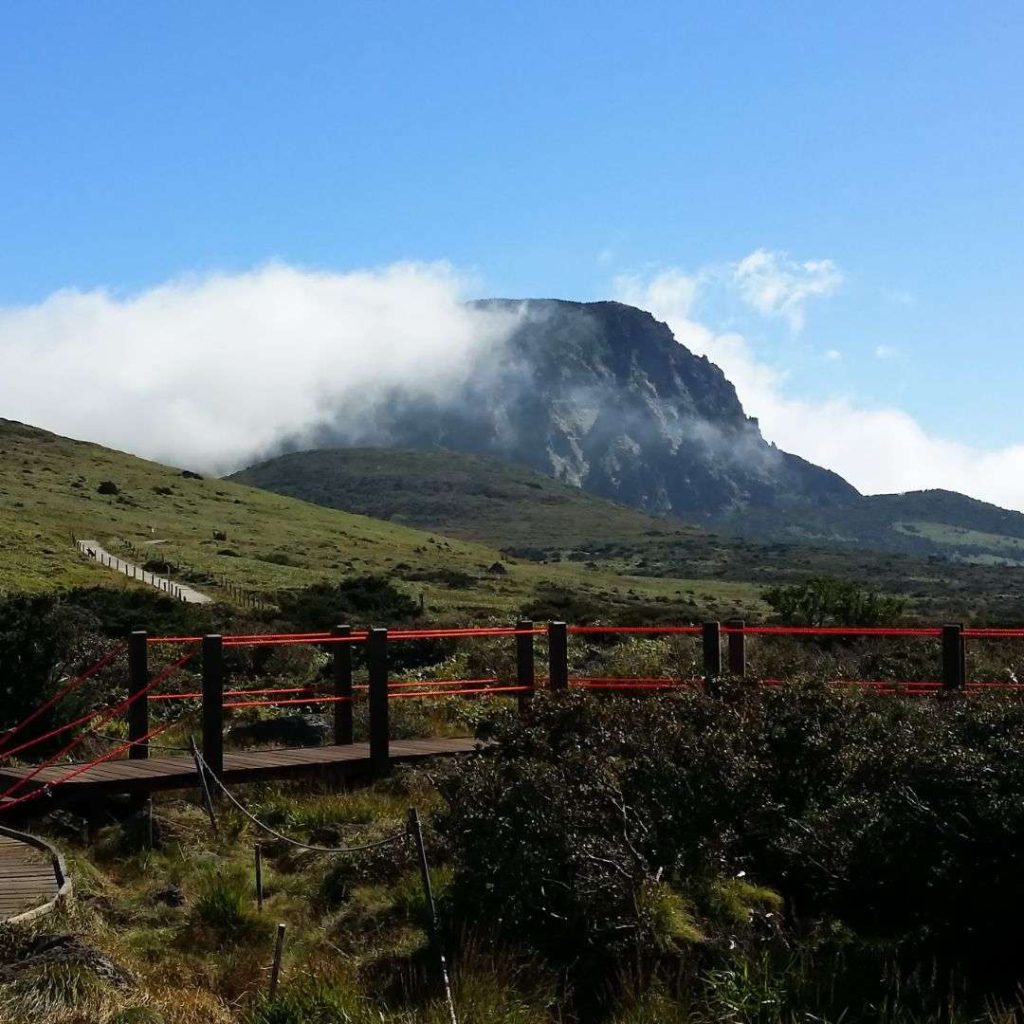
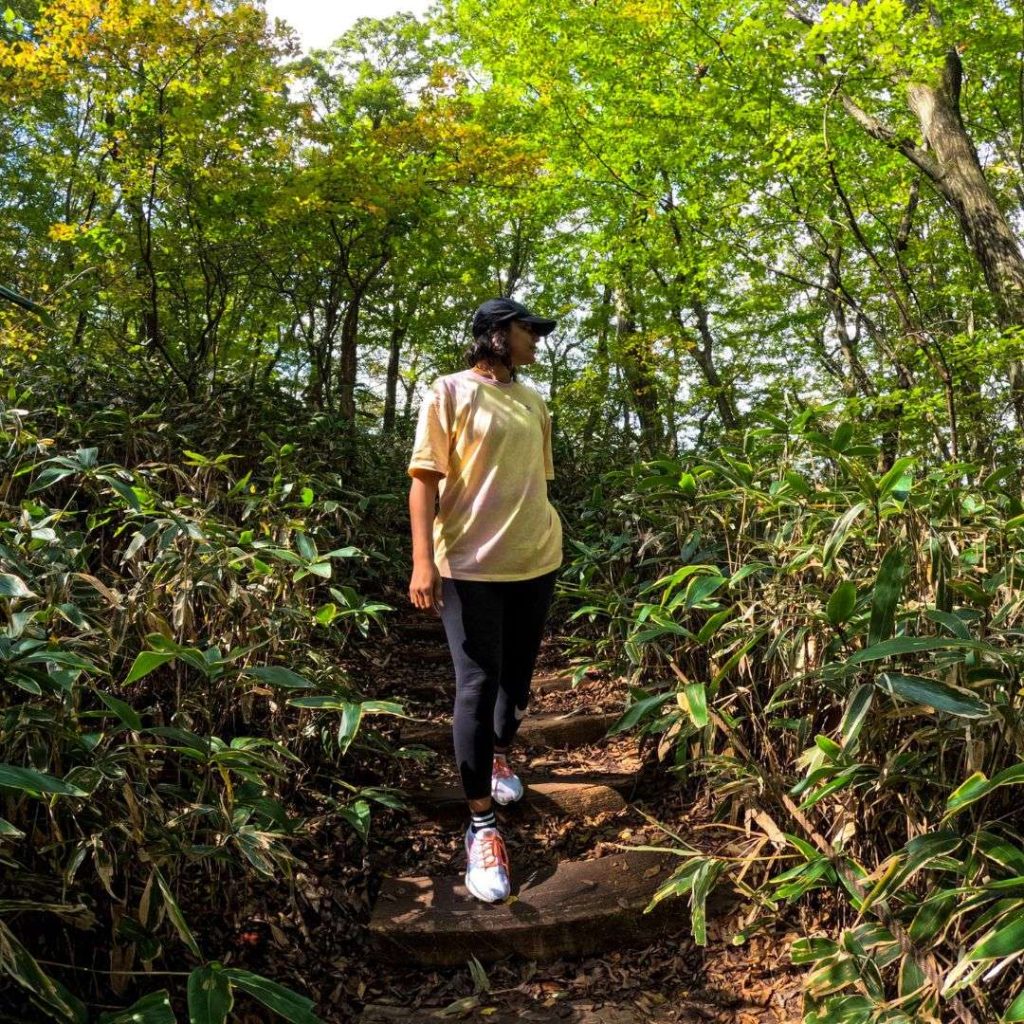
Seongsan Ilchulbong
Seongsan Ilchulbong is a UNESCO World Heritage Site that emerged from the sea in a volcanic spectacle 5,000 years ago. It is one of the most visited tourist sites. If you are looking for the best short hike in South Korea, the answer is Seongsan Ilchulbong.
Also known as the Sunrise Peak, the cone has a height of 182 meters and a diameter of 600 meters, with a crater at the top that is surrounded by 99 sharp peaks. The hike starts from the Seongsan Ilchulbong Entrance, a gate that leads to the trail. The trail then climbs steeply through a series of stairs and wooden platforms that circle the cone.
This hike takes about 30 to 40 minutes round trip and covers a distance of about 1.5 kilometres with an elevation gain of 150 meters. The highlight of the hike is the view from the top of Seongsan Ilchulbong, which is stunning. You can see the sunrise over the horizon, the ocean and the waves, and the nearby Udo Island and Seopjikoji Cape from the summit. You must add a hike to Seongsan Ilchulbong to your Jeju Island itinerary.

Olle Trails
If you are looking for a more relaxed hike in South Korea, choose from one of the Olle trails.
Olle Trails are a network of coastal trails that showcase the natural and cultural beauty of Jeju Island, with various routes and difficulty levels.
Olle, which means a narrow path between the street and the house in the Jeju dialect, is a term that refers to the trails that connect the villages, the fields, the beaches, and the hills of the island.
The trails were created by a local journalist who wanted to share the hidden gems and stories of Jeju Island with the visitors. There are 26 main trails and 5 sub-trails that cover a total distance of about 425 kilometres.
These trails are marked by blue and orange ribbons, signs, and maps that guide the hikers. Some of the best trails are:
- Trail 1: This is a 15-kilometer trail from Jeju International Airport to Siheung Elementary School. It takes you through coastal stretches, farmlands, forests, and villages. It features iconic spots like the dragon-headed Yongduam Rock and the mind-boggling Mysterious Road which happens to defy gravity!
- Trail 7: A 13-kilometer journey from Oedolgae Rock to Wolpyeong Pogu Port, tracing the rugged shoreline with breathtaking views of waves, cliffs, and islands. Highlights include the magical Cheonjiyeon Waterfall creating a rainbow-kissed pond and the Jeongbang Waterfall, a rare cascade directly into the sea.
- Trail 10: This is an 11.5-kilometer trail from Hwasun Golden Sand Beach to Hamo Port. You’ll go through sandy beaches, volcanic cones, lava tubes, and wetlands. The trail also features the Manjanggul Lava Tube, a UNESCO World Heritage Site that is one of the longest and largest lava tubes in the world, and the Gimnyeong Maze Park, a fun and challenging maze made of hedges and stones.
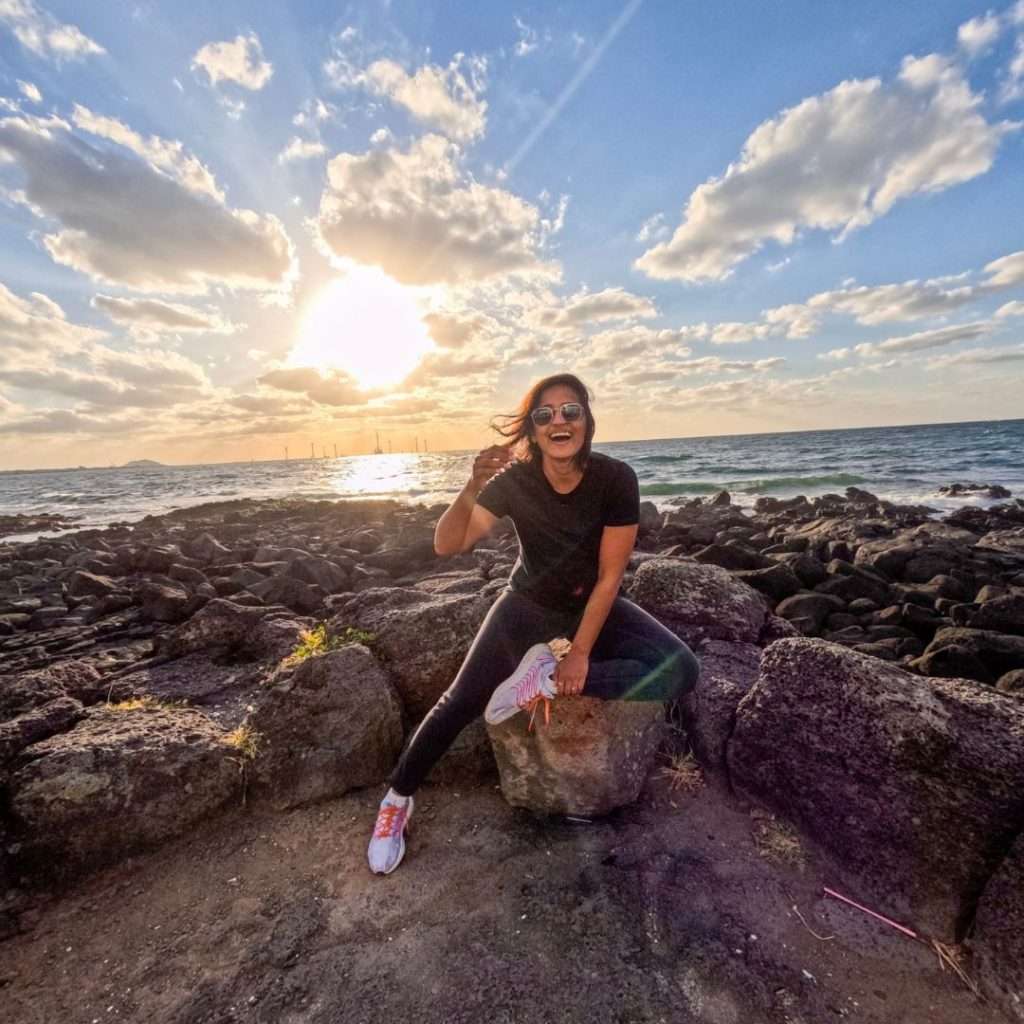
Best Hikes in Jirisan National Park
Jirisan National Park is one of the most historic and challenging hiking destinations in South Korea, with its ancient temples, dense forests, and rugged peaks. Nestled in the southern part of the country, this expansive park spans over 480 square kilometres and effortlessly weaves through Jeollabuk-do, Jeollanam-do, and Gyeongsangnam-do provinces.
The park is home to Jirisan, the second-highest mountain in South Korea, as well as many other peaks, valleys, rivers, waterfalls, temples, and statues. The park is also famous for its wildlife, such as the Asiatic black bear, the Korean goral, and the Korean musk deer.
There are many trails to choose from in Jirisan National Park, here are some of the best hikes in Jirisan National Park that you should not miss:
Cheonwangbong Peak
Cheonwangbong Peak proudly stands as the highest point in mainland South Korea and the crown jewel of Jirisan. At a majestic height of 1,915 meters, it is one of the best Hikes you must try in South Korea.
The hike starts from the Jungsanri Village, a small village that has a visitor centre, a parking lot, and a bus stop. Along the way, encounter attractions like Yeonhabong Peak, offering a tantalizing view of Cheonwangbong, and Chotdaebong Peak, treating you to vistas of the Yeongnam Alps.
The trail intensifies as it approaches the pinnacle of Cheonwangbong. This 10 to 12-hour round trip covers a challenging distance of approximately 20 kilometres, with an elevation gain of 1,600 meters. From the summit, you can see the whole park, the Nogodan Ridge, and the neighbouring provinces.
Nogodan Ridge
Nogodan Ridge is a part of the Baekdudaegan, the mountain range that runs through the Korean Peninsula. It is a moderate hike starting from the Nogodan Rest Area.
As you wander, discover the Nogodan Peak, treating you to sweeping vistas of Hallasan Volcano and Jeju Island. Rest a while at Seseokpyeongjeon, a grassy field that transforms into a cosy camping spot. Cross the enchanting Hwagae Valley, famous for its cherry blossoms in spring. Making it one of the best spring hikes in South Korea.
The trail, spanning around 12 kilometres, won’t keep you on your toes for too long – a manageable 4 to 6 hours round trip with an elevation gain of 600 meters. The highlight of the hike is The breathtaking view from Nogodan Ridge, showcasing valleys, rivers, villages, and the sparkling sea. And yes, you’ll catch a glimpse of Cheonwangbong Peak, standing tall like a distant guardian.
Hwaeomsa Temple
Hwaeomsa Temple is a short and easy hike to one of the oldest and most impressive Buddhist temples in South Korea, with its elaborate architecture and statues. Founded in the 6th century, this sacred site is one of the three jewel temples of Korean Buddhism, offering a serene escape into spirituality.
Commencing from the Hwaeomsa Temple Entrance, a welcoming gate that leads to the temple complex, the trail gently unfolds. Following a paved road and crossing a wooden bridge over a meandering stream, the journey is a mere 30 to 40-minute round trip, covering a short distance of about 1.5 kilometres. With a modest elevation gain of about 100 meters, it’s a hike accessible to all.
The highlight of the hike is the Hwaeomsa Temple. Explore the sacred grounds, where the Daeungjeon Hall stands tall, housing a Buddha statue and a painting of the Avatamsaka Sutra. Venture to the Gakhwangjeon Hall, where the statue of the Vairocana Buddha and four guardian kings reside. Don’t miss the Gwaneumjeon Hall, home to the Bodhisattva of Compassion and a thousand-armed statue of the Avalokitesvara. As you pass through the Cheonwangmun Gate, be greeted by four giant statues of the heavenly kings.
Best Hikes in Other Regions of South Korea
Woraksan National Park
Woraksan National Park is a lesser-known but beautiful park with lakes, waterfalls, and temples. So if you are on the lookout for the least crowded best hikes in South Korea, Woraksan Park is your spot. Nestled in the heart of the country, spanning Chungcheongbuk-do and Chungcheongnam-do provinces, this park covers over 290 square kilometres of natural wonders.
The park is home to Woraksan, standing tall at 1,094 meters, and takes centre stage as the main peak of the Sobaek Mountain Range. The park is also famous for its natural attractions, such as the Chungju Lake, the largest artificial lake in South Korea, and the Dogyeongsa Temple, a Buddhist temple that dates back to the 7th century.
One of the best hikes in Woraksan National Park is the Jaebibong Peak, a moderate hike to a peak that offers views of the lake and the temple. The hike starts from the Dogyeongsa Temple, a temple that has a pagoda, a bell tower, and a statue of the Buddha. The trail then climbs steeply through a forest of pine and oak trees. As you ascend, encounter wonders like the Dogyeongsa Falls, where cascading water flows from the temple, and the Jaebibong Shelter, a rest area with a picturesque view of the lake. The 3 to 4-hour round trip covers approximately 6 kilometres, with an elevation gain of about 500 meters.
The highlight of the hike is the view from the top of Jaebibong Peak, which is gorgeous! You can see the Chungju Lake, the Dogyeongsa Temple, and the Woraksan Mountain from the summit.
Bukhansan National Park
Don’t wish to go too far away from Seoul? Here’s one of the best hikes in South Korea that will take you in nature yet remain close to the city. Located in the northern part of the capital city, the park covers an area of over 80 square kilometres. Home to Bukhansan, a mountain that has a height of 836 meters and is the main peak of the Bukhan Mountain Range.
Bukhansan is adorned with cultural heritage like the Bukhansanseong Fortress, a stone marvel from the Joseon Dynasty, and the Baegundae Peak offering a mesmerizing view of Seoul’s cityscape.
One of the best hikes in Bukhansan National Park is the Baegundae Peak, a challenging hike to the highest point in the park, with views of the fortress and the city. As you venture upward, encounter landmarks like the Daeseongmun Gate, marking the entrance to the fortress, and the Bogukmun Gate, serving views of the Baegundae Peak. It is one of the best Autumn hikes in South Korea. The trail gains intensity as it approaches the summit, with steep and rocky terrain.
The 4 to 5-hour round trip, covering approximately 7 kilometres with an elevation gain of 600 meters, culminates in the breathtaking view from Baegundae Peak.
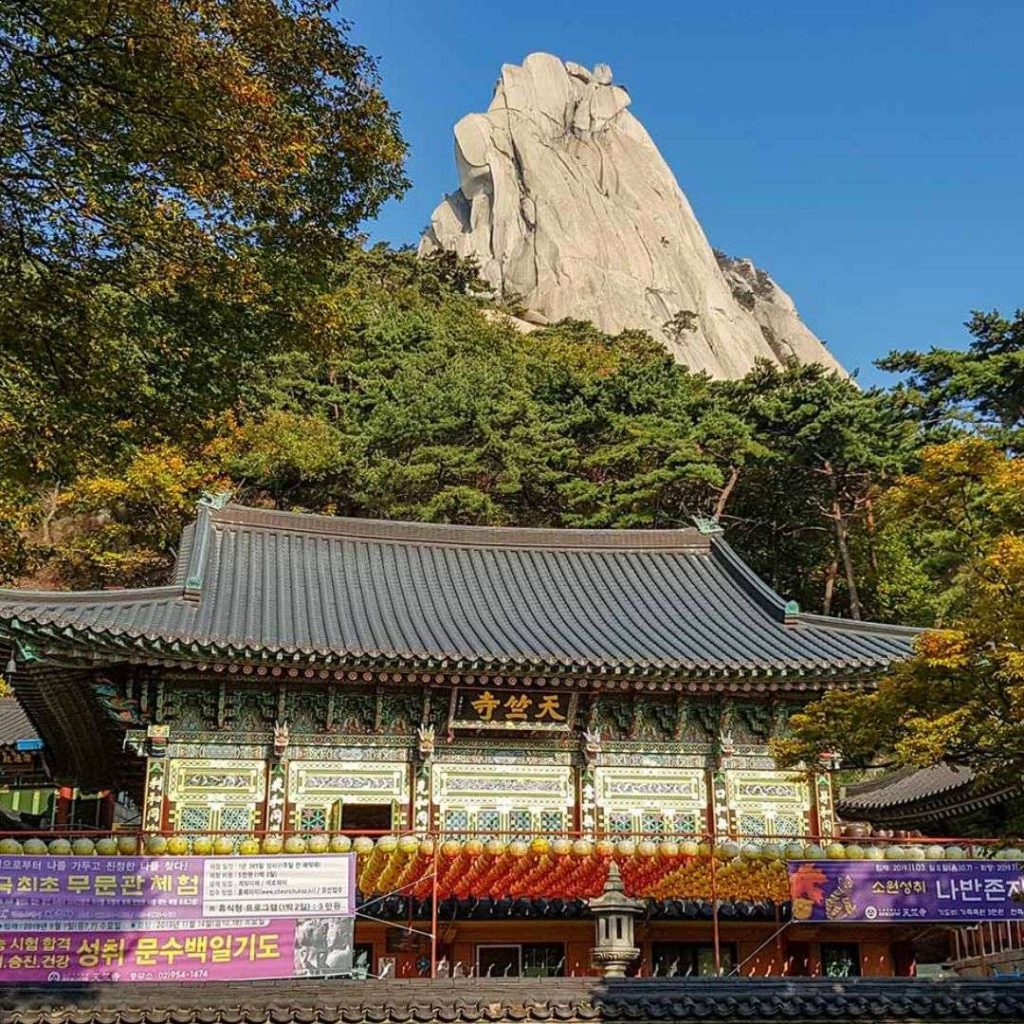
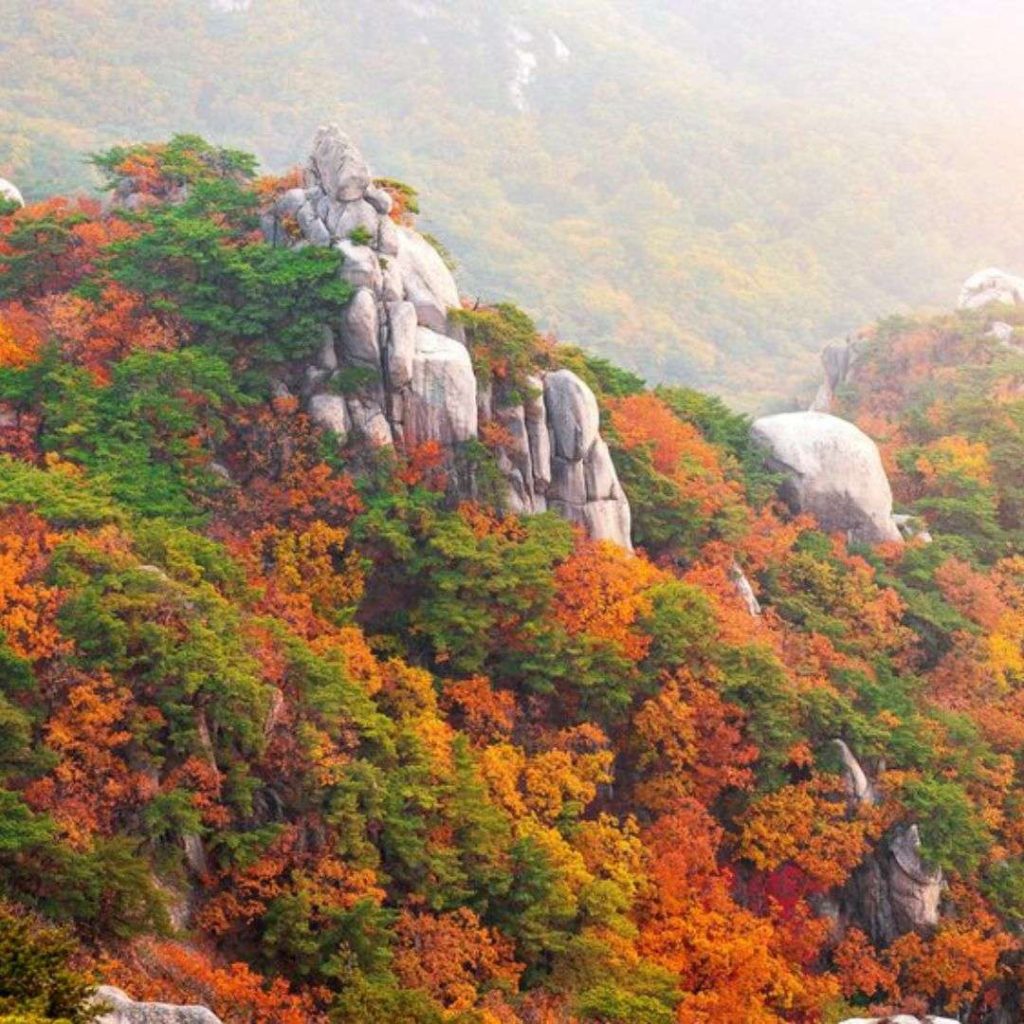
Naejangsan National Park
Naejangsan National Park is a park famous for its fall foliage and waterfalls. Making it the absolute best Autumn hike in South Korea. The park is also known for the Naejangsa Temple, a Buddhist temple that dates back to the 7th century, and the Naejangsa Falls, a waterfall that flows from the temple.
One of the best hikes in Naejangsan National Park is the Naejangsan Circuit. A moderate hike that loops around the mountain, with views of the foliage and the waterfalls. Wandering along a paved road and crossing a charming wooden bridge over a babbling stream, the trail leads you into the heart of the forest. Pass by the Uhwajeong Pavilion, offering a serene view of the valley and vibrant foliage. Catch your breath at the Bulchulbong Peak, boasting a panorama of the Naejangsan Mountain.
The 3 to 4-hour round trip covers approximately 8 kilometres with an elevation gain of 400 meters. The highlight of the hike is the view of the stunning autumn foliage. You can see the red, yellow, and orange leaves of the maple, ginkgo, and oak trees from the trail.
Planning a Trip to South Korea? Read also:
A Guide to Gamcheon Culture Village in Busan
Fall Foliage in South Korea, Your Guide to the Best Autumn Hikes and Views
Best Places in Jeju Island for a 4 day Itinerary
From the heights of Seoraksan to the cultural wonders of Bukhansan, South Korea’s got your adventure checklist covered. Save for your South Korea trip. And if the blog helped you, do give me a shout-out. Happy hiking!
FAQs on Best Hikes in South Korea
Absolutely! South Korea caters to hikers of all levels. Trails like Seongsan Ilchulbong on Jeju Island, Hwaeomsa Temple and Biseondae trail in Seoraksan are easy and fun hikes.
Seoraksan National Park in the northeastern part of South Korea is renowned for its stunning peaks and diverse trails, making it a must-visit for hikers.
Definitely! Parks like Bukhansan National Park not only offer challenging trails but also boast cultural treasures like the Bukhansanseong Fortress.
Spring (April to June) and Fall (September to November) are ideal. The weather is pleasant, and the colourful landscapes enhance the hiking experience.
Most trails are accessible to all ages, but some challenging peaks may have age or health restrictions. Always check trail specifics before embarking on your adventure.
While some parks may permit pets on certain trails, it’s essential to check individual park regulations as rules vary.
